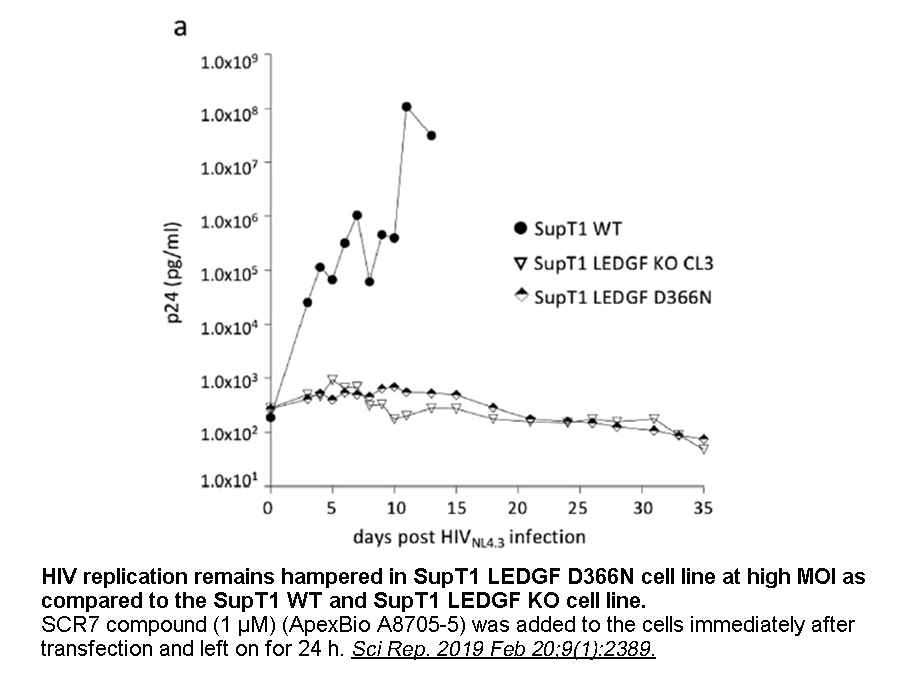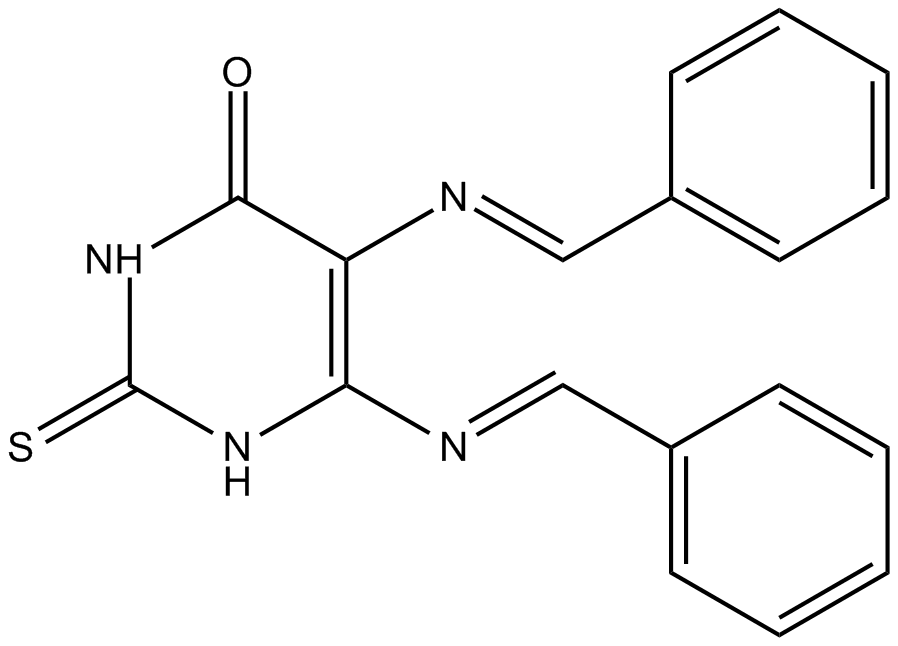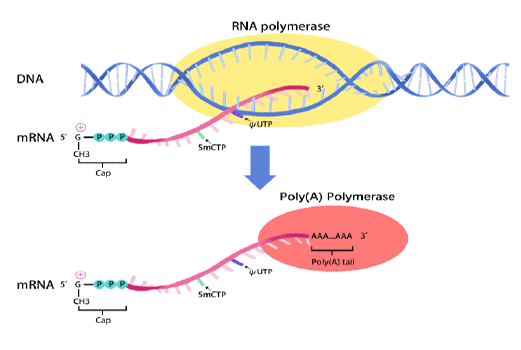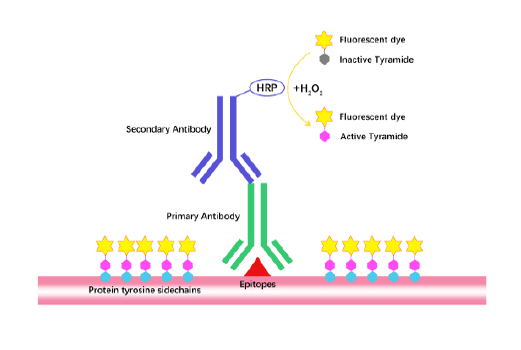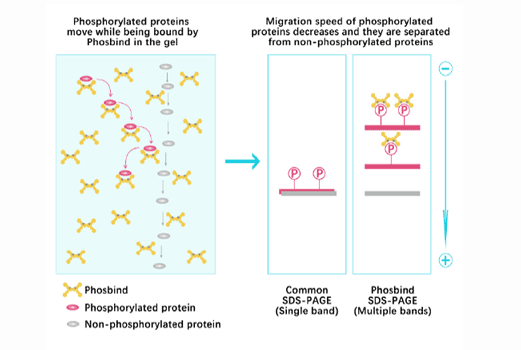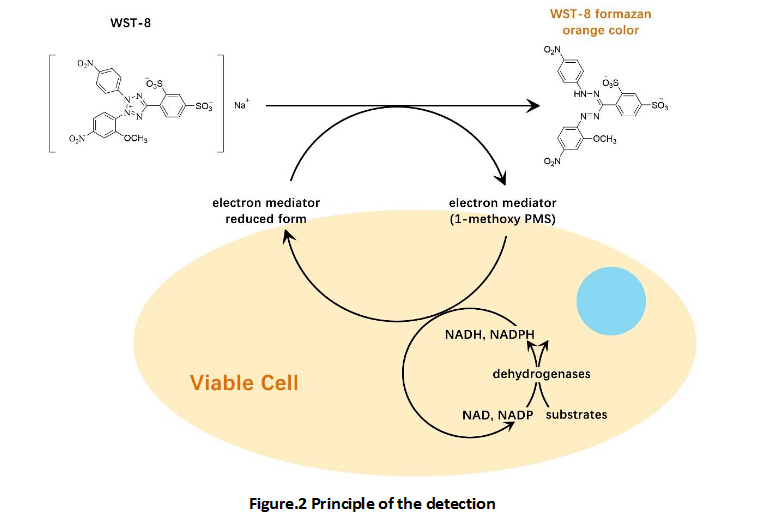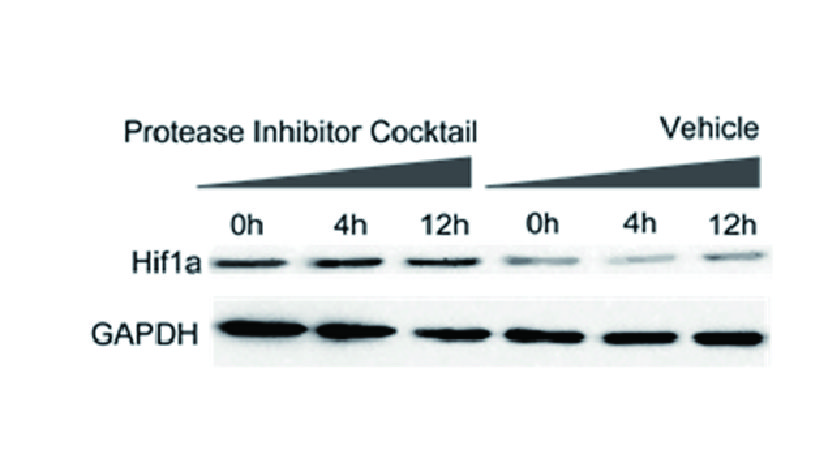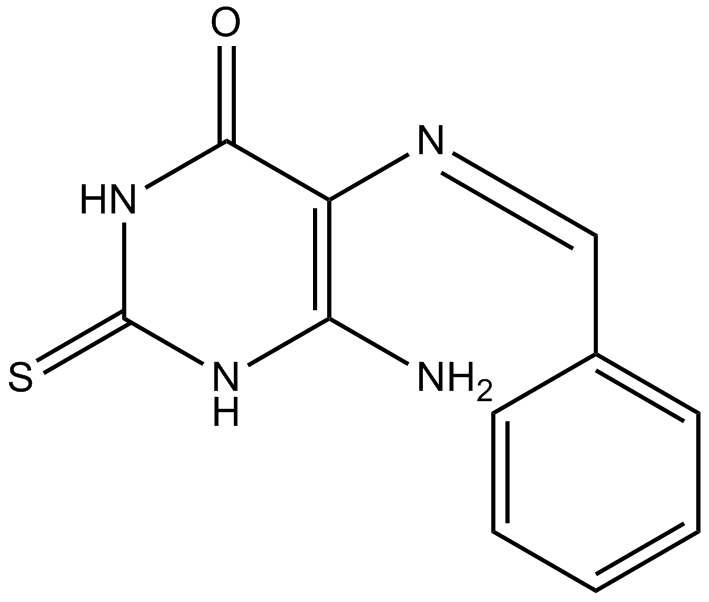SCR7
Scr7 is a DNA ligase IV inhibitor, initially identified as an anti-cancer agent [1].
Scr7 targets the DNA binding domain of DNA ligase IV, reducing its affinity for double strand breaks (DSBs) and inhibiting its function. Scr7 also inhibits DNA ligase III (but not DNA ligase I), albeit less efficiently. Cells were treated with doxycycline to induce Cas9 expression, with various concentrations of Scr7 for 24 h. Scr7 maintained cells capable of entering S/G2 phase, which is necessary for HDR [1]. Treatment of mice with Scr7 affects lymphocyte development, as DNA ligase IV plays a key role in the joining of coding ends during V(D)J recombination by means of C-NHEJ16. The defects in lymphocyte development upon Scr7 treatment are transient and reversible, due to the noncovalent mode of binding of Scr7. Scr7 enhanced the frequency of HDR by transiently blocking NHEJ (with the exception of DNA ligase I–dependent alt-NHEJ), resulting in precise genome editing by CRISPR-Cas9 in both cultured cells and in mice [2].
References:
[1] Srivastava M, Nambiar M, Sharma S et al. An inhibitor of nonhomologous end-joining abrogates double-strand break repair and impedes cancer progression. Cell. 2012 Dec 21; 151 (7): 1474-87. doi: 10.1016/j.cell.2012.11.054.
[2] Maruyama T, Dougan SK, Truttmann MC et al.Increasing the efficiency of precise genome editing with CRISPR-Cas9 by inhibition of nonhomologous end joining. Nat Biotechnol. 2015 Mar 23. doi: 10.1038/nbt.3190. [Epub ahead of print]
- 1. Dennis Klug, Katharina Arnold, et al. "A toolbox of engineered mosquito lines to study salivary gland biology and malaria transmission." PLoS Pathog. 2022 Oct 12;18(10):e1010881. PMID: 36223382
- 2. Lampi Y, Van Looveren D, et al. "Targeted editing of the PSIP1 gene encoding LEDGF/p75 protects cells against HIV infection." Sci Rep. 2019 Feb 20; 9 (1): 2389. PMID: 30787394
- 3. Krüger K, Geist K, et al. "Multiple DNA damage-dependent and DNA damage-independent stress responses define the outcome of ATR/Chk1 targeting in medulloblastoma cells." Cancer Lett. 2018 May 16; 430: 34-46. PMID: 29753759
- 4. Fernandez-Godino R, Bujakowska KM, Pierce EA. "Changes in extracellular matrix cause RPE cells to make basal deposits and activate the alternative complement pathway." Hum Mol Genet. 2018 Jan 1; 27 (1): 147-159. PMID: 29095988
- 5. Huberman LB, Coradetti ST, Glass NL. "Network of nutrient-sensing pathways and a conserved kinase cascade integrate osmolarity and carbon sensing in Neurospora crassa." Proc Natl Acad Sci U S A. 2017 Oct 10; 114 (41): E8665-E8674. PMID: 28973881
- 6. Hindriksen S, Bramer AJ, et al. "Baculoviral delivery of CRISPR/Cas9 facilitates efficient genome editing in human cells." PLoS One. 2017 Jun 22; 12 (6): e0179514. PMID: 28640891
- 7. Lee JS, Grav LM, et al. "Accelerated homology-directed targeted integration of transgenes in Chinese hamster ovary cells via CRISPR/Cas9 and fluorescent enrichment." Biotechnol Bioeng. 2016 May 9. PMID: 27159230
| Storage | Store at -20°C |
| M.Wt | 334.39 |
| Cas No. | 1533426-72-0 |
| Formula | C18H14N4OS |
| Solubility | insoluble in H2O; ≥16.72 mg/mL in DMSO; ≥2.6 mg/mL in EtOH with ultrasonic |
| Chemical Name | 5,6-bis((E)-benzylideneamino)-2-thioxo-2,3-dihydropyrimidin-4(1H)-one |
| SDF | Download SDF |
| Canonical SMILES | O=C(C(/N=C/c1ccccc1)=C(N1)/N=C/c2ccccc2)NC1=S |
| Shipping Condition | Small Molecules with Blue Ice, Modified Nucleotides with Dry Ice. |
| General tips | We do not recommend long-term storage for the solution, please use it up soon. |
| Cell experiment [1]: | |
|
Cell lines |
Epithelial (A549) and melanoma (MelJuSo) cell line derivatives |
|
Preparation method |
Soluble in DMSO >10 mM. General tips for obtaining a higher concentration: Please warm the tube at 37°C for 10 minutes and/or shake it in the ultrasonic bath for a while. Stock solution can be stored below -20°C for several months. |
|
Reaction Conditions |
24 hours at 37°C |
|
Applications |
Scr7 increases the efficiency of insertional mutagenesis in cell lines. In A549 cells, 0.01 μM Scr7 improves the efficiency of insertion at the target site about threefold relative to the untreated control. In Scr7-treated MelJuSo cells, the insertion efficiency is also enhanced in a dose-dependent manner up to 19-fold. |
| Animal experiment [1]: | |
|
Animal models |
Kell-LPETG mice |
|
Dosage form |
CRISPR components mixture (Cas9 mRNA, sgRNA and targeting template) and 10 mM of Scr7 NHEJ inhibitor (to 1 mM final) were injected into the cytoplasm at the pronuclear stage. The injected zygotes were transferred at the 2-cell stage into the pseudo-pregnant females. |
|
Applications |
Co-injection of Scr7 increases the efficiency of precise genome editing in mouse embryos. The insertion efficiency with Scr7 co-injection is significantly higher (P = 0.0012) compared to blastocysts not injected with Scr7. The insertion efficiency in Scr7-co-injected E10 embryos is also significantly enhanced compared to E10 embryos not injected with Scr7 (P = 0.003). |
|
Other notes |
Please test the solubility of all compounds indoor, and the actual solubility may slightly differ with the theoretical value. This is caused by an experimental system error and it is normal. |
|
References: 1. Maruyama T, Dougan SK, Truttmann MC et al. Increasing the efficiency of precise genome editing with CRISPR-Cas9 by inhibition of nonhomologous end joining. Nat Biotechnol. 2015 May; 33 (5): 538-42. |
|
Quality Control & MSDS
- View current batch:
Chemical structure
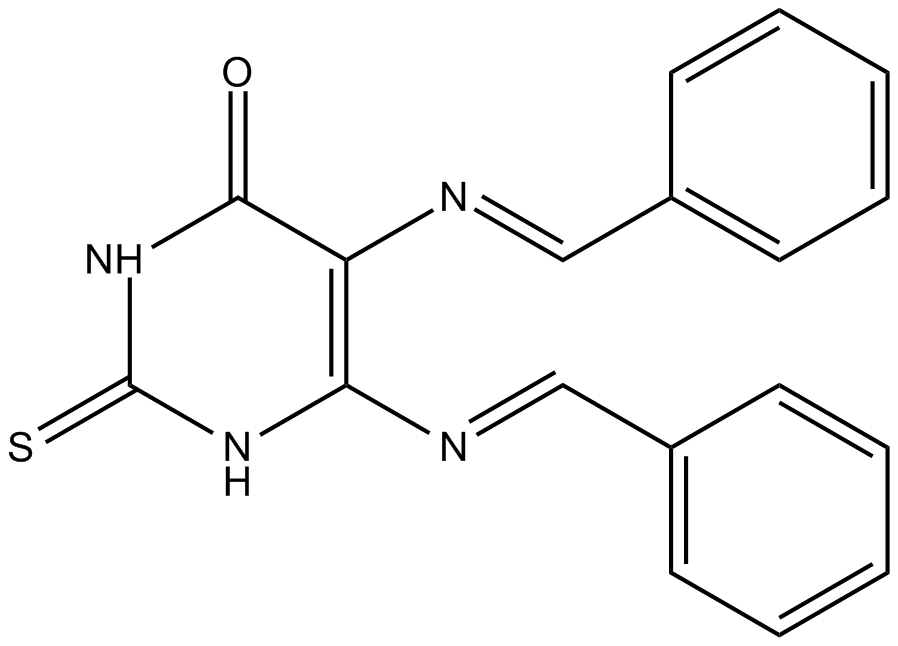
Related Biological Data
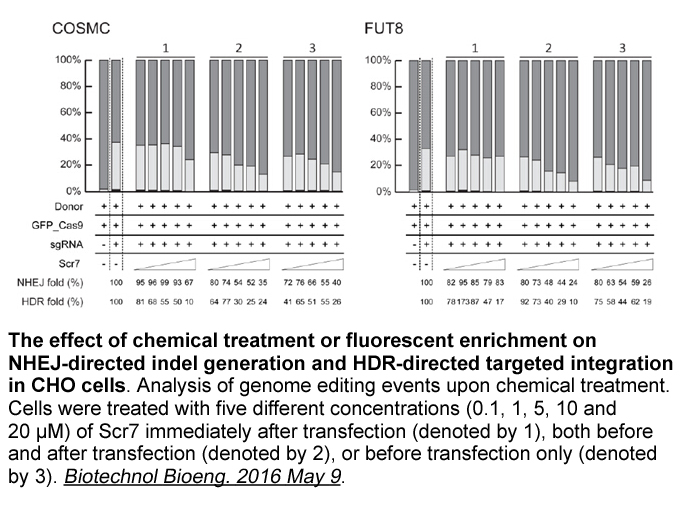
Related Biological Data
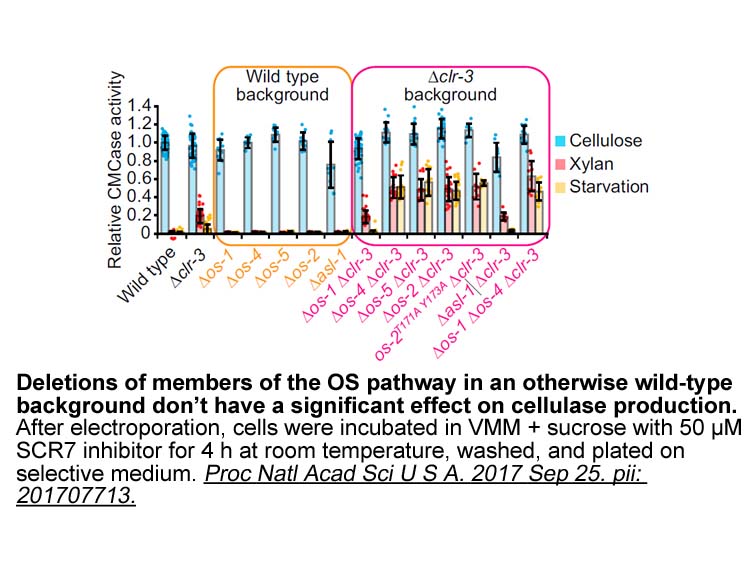
Related Biological Data
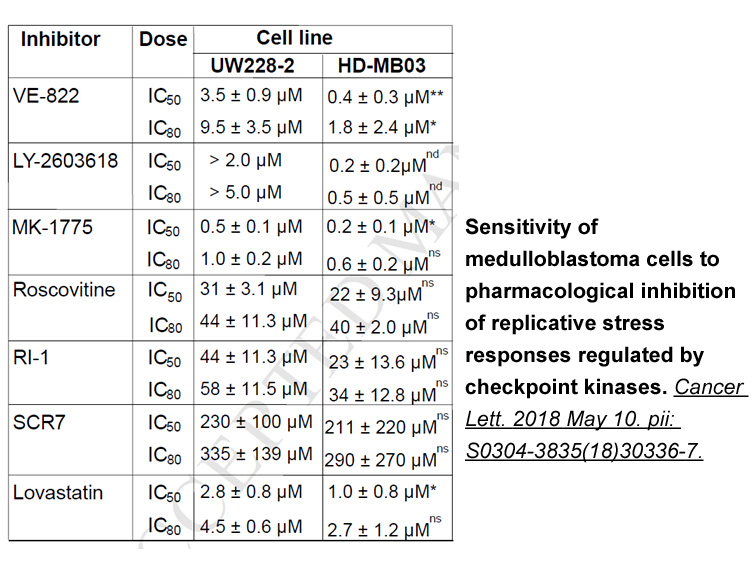
Related Biological Data
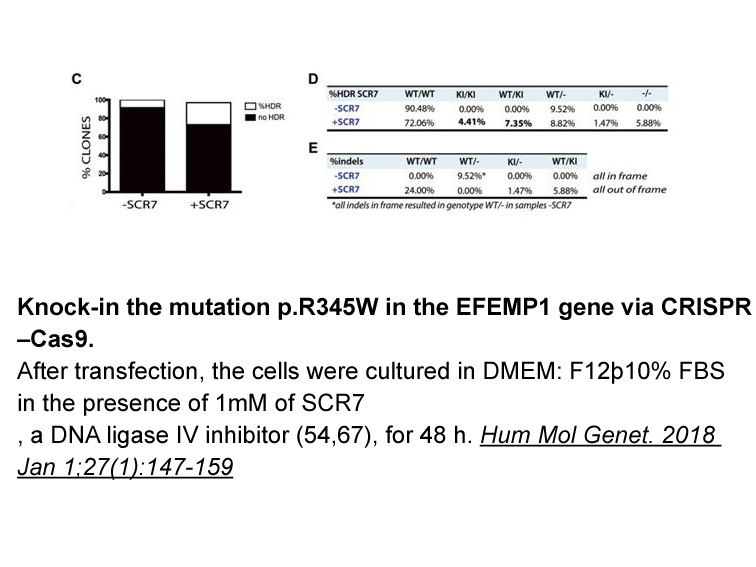
Related Biological Data
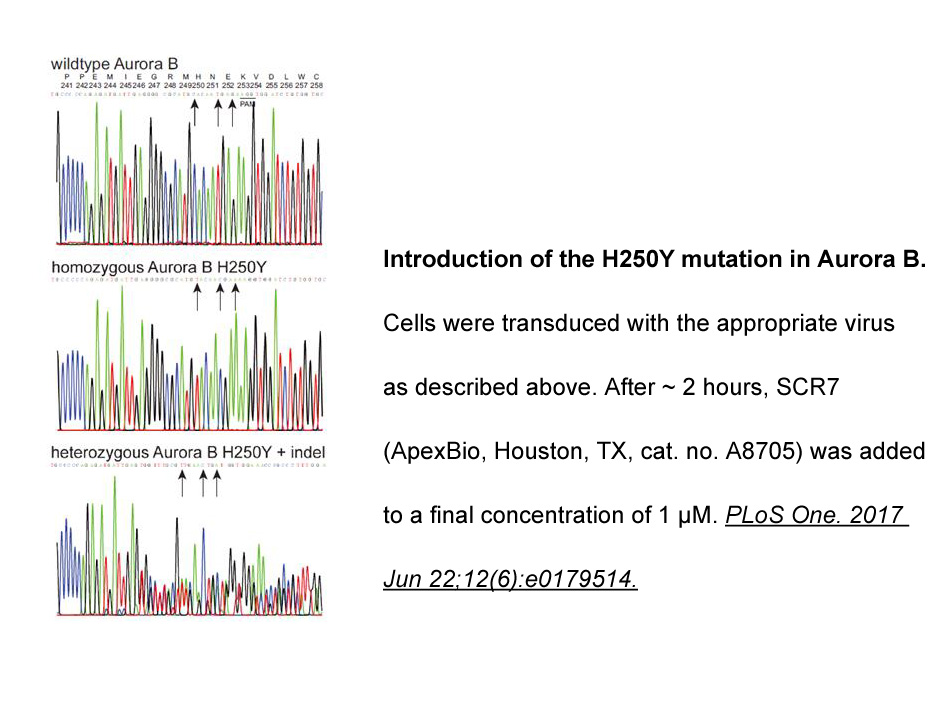
Related Biological Data
